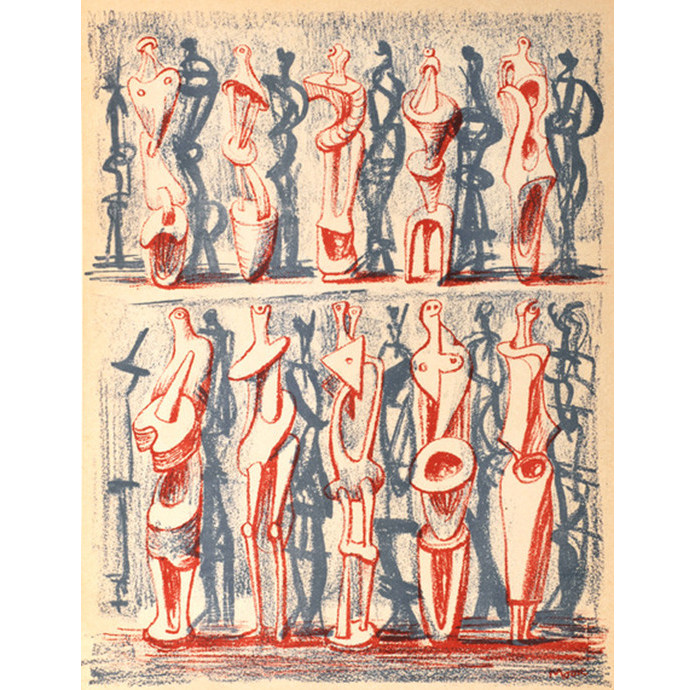Moore, Henry: Red and Blue Standing Figures – SOLD
£650.00
Out of stock
Description
Artist: Henry Moore, (1898-1986)
Title and date: Red and Blue Standing Figures, 1951, signed in the plate
Size of picture: 31 x 24 cm
Description: an original lithograph in colours from the edition issued by San Lazarro for the album XXeme Siècle No.1. Printed from the same stones and at the same date as the signed edition of 30 impression at the studio of Desjobert, Paris 1951. A very fine strong impression on light cream wove paper in excellent condition.
More images can be provided on request.
Artist description:
Henry Moore was born into a large family in Castleford, a small mining town in Yorkshire, England. While still at school he began to carve wood and model clay and decided that he wanted to be a sculptor. His father however, thought that teaching would be a more practical option, so rather than going to the local art college, Moore trained as a teacher and began teaching at his old school.
In 1916, when he was 18, Henry Moore joined the army and he travelled to France with his regiment where they fought in the battle of Cambrai. Moore was sent home after suffering from the effects of a gas attack. Once he had recovered he went back to teaching but soon realised that it wasn’t for him and instead began studying at Leeds School of Art. In 1921 he won a scholarship to study sculpture at the Royal Academy of Art in London where he became particularly interested in Mexican, Egyptian and African sculptures at the British Museum. After graduating, Henry Moore stayed in London and joined other artists experimenting with ideas and styles. In the 1930s, he joined an artist group called Unit One, which included Barbara Hepworth, Ben Nicholson and Paul Nash. He was also a member of the British Surrealist movement, and took part in the International Surrealist Exhibition in London in 1936.
During the Second World War, Moore was asked by the War Artists’ Advisory Committee to document life on the home front. He drew people sheltering in bomb shelters in London underground stations and these drawings, along with those he made later in coal mines, are considered among his greatest achievements.
Henry Moore won the International Prize for Sculpture at the Venice Biennale of 1948, and from then onwards, he remained in huge demand. His distinctive sculptures can still be seen in parks and squares in cities all over the world.

